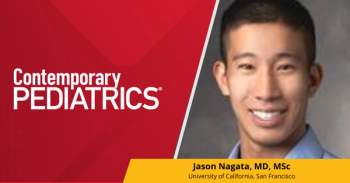
Comparing rates of self-harm during the pandemic to the preceding time
An investigation examines whether self-harm, suicide or suicidal ideation in children and adolescents saw an increase during the pandemic, as anticipated by many clinicians.
Over the past decade, concerns about the mental health of teenagers has grown as rates of suicidality and self-harm have risen. With the pandemic came a heightened worry that mental health issues in this population would significantly increase as a result of isolation and anxiety about COVID-19. A
Investigators ran a population-based cohort study that included all teenagers and young adults who were born in Ontario between 1990 and 2006. They compared April 1, 2020 to June 30, 2021, to March 1, 2018 to February 28, 2020. The main outcomes were emergency department encounters and hospitalizations for either self-harm or overdose. Secondary measures included self-harm, overdose, or all-cause mortality.
There were a total of 1,690,733 teenagers and young adults included in the cohort. There were slightly more girls in the cohort and the median age was 17.7 years at the start of follow-up, which was either March 1, 2018 or the participants 14th birthday. Following 4,110,903 person-years of follow-up, investigators found that 6224 participants had experienced a primary outcome of self-harm or overdose during the pandemic (39.7 per 10 000 person-years) vs 12 970 (51.0 per 10 000 person-years) prepandemic, with an hazard ratio (HR) of 0.78 (95% CI, 0.75-0.80). Furthermore, they found that the risk of self-harm, overdose, or death was lower during the pandemic than in the preceding period (HR, 0.78; 95% CI, 0.76-0.81). This was not true of all-cause of mortality (HR, 0.95; 95% CI, 0.86-1.05).
The investigators concluded that contrary to what many predicted, that in the first 15 months of the pandemic, there was a decline in hospital care for either self-harm of overdose in teenagers and adolescents. They noted that this is in line with other research that indicated either little change in mental health care utilization in hospitals or declines in such care.
Reference
- Ray J, Austin P, Aflaki K, Guttmann A, Park A. Comparison of self-harm or overdose among adolescents and young adults before vs during the COVID-19 pandemic in Ontario. JAMA Netw Open. 2022;5(1):e2143144. doi:10.1001/jamanetworkopen.2021.43144
Newsletter
Access practical, evidence-based guidance to support better care for our youngest patients. Join our email list for the latest clinical updates.


![Jodi Gilman, PhD, on cumulative prenatal adversity linked to adolescent mental health risk Document Jodi Gilman, PhD, on cumulative prenatal adversity linked to adolescent mental health risk Live? Do you want this document to be visible online? Scheduled Publishing Exclude From Home Page Do you want this document to be excluded from home page? Exclude From Infinite Scroll Do you want this document to be excluded from infinite scroll? Disable Related Content Remove related content from bottom of article. Password Protection? Do you want this gate this document? (If so, switch this on, set 'Live?' status on and specify password below.) Hide Comments [Experiment] Comments are visible by default. To hide them for this article toggle this switch to the on position. Show Social Share Buttons? Do you want this document to have the social share icons? Healthcare Professional Check Is Gated [DEV Only]Do you want to require login to view this? Password Password required to pass the gating above. Title Jodi Gilman, PhD, on cumulative prenatal adversity linked to adolescent mental health risk URL Unique identifier for this document. (Do not change after publishing) jodi-gilman-phd-on-cumulative-prenatal-adversity-linked-to-adolescent-mental-health-risk Canonical URL Canonical URL for this document. Publish Date Documents are usually sorted DESC using this field. NOTE: latency may cause article to publish a few minutes ahead of prepared time 2026-01-19 11:52 Updated On Add an updated date if the article has been updated after the initial publish date. e.g. 2026-01-19 11:50 Article Type News Display Label Author Jodi Gilman, Phd > Gilman, Jodi Author Fact Check Assign authors who fact checked the article. Morgan Ebert, Managing Editor > Ebert, Morgan Content Category Articles Content Placement News > Mental, Behavioral and Development Health > Clinical AD Targeting Group Put the value only when the document group is sold and require targeting enforcement. Type to search Document Group Mapping Now you can assign multiple document group to an article. No items Content Group Assign a content group to this document for ad targeting. Type to search Issue Association Please choose an issue to associate this document Type to search Issue Section Please choose a section/department head if it exists Type to search Filter Please choose a filter if required Type to search Page Number Keywords (SEO) Enter tag and press ENTER… Display summary on top of article? Do you want display summary on top of article? Summary Description for Google and other search engines; AI generated summary currently not supporting videos. Cumulative prenatal adversities were linked to higher adolescent mental health risk, highlighting the importance of prenatal history and early clinical monitoring. Abstract Body *********************************************************************************************************** Please include at least one image/figure in the article body for SEO and compliance purposes ***********************************************************************************************************](https://cdn.sanity.io/images/0vv8moc6/contpeds/e6097cb5e6d6c028c0d4e9efd069e69fdab6d00b-1200x628.png?w=350&fit=crop&auto=format)





